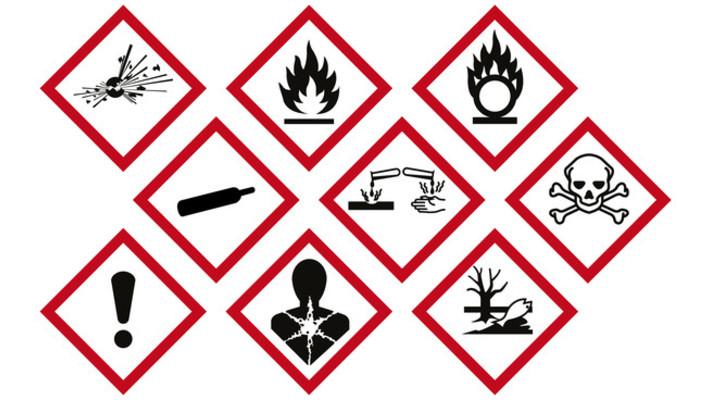Near infrared identifies flexoprinting
By Raimund Leitner, Project Manager for Multi-Spectral Image Processing at the
Austrian Competence Centre CTR
Waste paper processors value one particular property of this secondary raw material above all others: its quality. For high-grade waste paper is the basis ingredient necessary for high-quality recycling. Not only undesired types of paper such as cardboard or mass-coloured advertising slips impair the quality of the waste paper and are unwanted by the processors. The flexoprint newspapers that enter Germany from the UK or Italy as a result of the globalised trade with waste paper are a particular problem.
Until now waste paper consignments have been inspected visually. This process is time-consuming and requires specially trained personnel. Despite this, the method only detects the visual characteristics and decisive material and chemical properties remain undiscovered.
Using this approach it is practically impossible to identify those newspapers printed using the flexoprint process. However, it is precisely these publications that cause major difficulties in the de-inking process. Flexoprint and offset-printed newspapers can practically only be identified by their titles. In order to overcome this problem, scientists have been attempting to come up with technologies capable of objectively determining the quality of waste paper for a number of years. With this goal in mind, the International Association of the Deinking Industry (INGEDE) initiated a research project at the Austrian Competence Centre CTR Carinthian Tech Research AG in conjunction with the Paper Technology Specialists (PTS) in 2007.
The aim of the project was to develop a prototype for the optical quality control of waste paper based on near infrared (NIR) spectral imaging. The light in the NIR spectral range of 1,000 to 2,500 nanometres, which is invisible to the human eye, was to be used to differentiate between paper materials and printed surfaces.
Near infrared as a solution
Although modern colour cameras can provide high-resolution colour pictures of waste paper lying on a conveyor belt and thus information on colour, location, position and dimensions of a newspaper or a carton, they provide practically no information on the material or the nature of the object.
However, if NIR spectral imaging spectra in the 1,000- to 2,500-nanometre range are measured, the characteristic absorption bands of cellulose, the various paper fillers as well as the coating and printing inks enable conclusions to be drawn regarding the properties of the material.
Until now spectral imaging in the range up to 2,500 nanometres had only been measurable in the laboratory. With the prototype developed in the research project CTR has for the first time realised the spatial resolution and the extended spectral range for NIR spectral imaging in an industrial environment. Among other things, the prototype makes it possible to determine whether the object detected is made of paper or cardboard or whether it was printed using an offset or flexoprinting process. In order to achieve this, NIR spectra with high spatial and spectral resolutions have to be used for measuring.
These NIR spectra represent the material fingerprint of the product in question and make it possible to differentiate between paper and cardboard as well as between flexoprinting and offset printing by means of complicated classification algorithms.
Result within milliseconds
The Austrian Competence Centre CTR set a new standard for resolution and spectral range with the prototype developed during the research project. It is capable of recording and classifying the locally resolved NIR spectra of waste paper in real time. On the basis of the resulting classification, unwanted objects such as cardboard, paperboard, plastic and flexoprint newspapers can all be rejected from the flow of material. This is carried out by means of a battery of compressed air jets which propel the unwanted material into a separate container.
In the meantime a prototype suitable for industrial use has been fitted into a robust steel housing which can be simply transported by truck. In spite of its relatively industrial appearance the interior of the prototype contains high technology designed by CTR: two sensitive cameras, special optical components and lighting equipment. Furthermore, a high-performance computer built into the prototype collects the multispectral image data and calculates the classification result in real time.
In this case the image data is evaluated in less than 10 milliseconds, the classification result is calculated, the location and centre of gravity of the objects is determined and the control signal to the ejector jets is generated automatically.
Highly accurate identification
A highly accurate identification level of over 90 per cent for all types of paper is vital in order to precisely register all components in the material to be de-inked. This was achieved for both non-paper components and de-inking papers.
A rate of 70 to 90 per cent was achieved for the very large group of non-de-inking papers, which includes all types of cardboard, corrugated cardboard and other paperboards. The research project demonstrated that flexoprinted newspapers could be identified with a very high degree of accuracy of over 95 per cent.
The high spatial resolution and the spectral range play a vital role in achieving this. A rate of over 90 per cent was achieved for non-paper materials such as plastics, wood and textiles, as well as de-inking material. The combined result is accuracy in classification not previously possible using optical methods.
NIR spectral imaging is the technology of the future
The results of the research project again show very clearly that NIR spectral imaging represents one of the technologies of the future for the optical quality evaluation of waste paper. Negotiations are already taking place regarding a follow-up project. The goal of the project is to make the results commercially available in the form of an industrial quality control system.
Although this is not possible at present, it is already clear that sooner rather than later automatic systems based on NIR spectral imaging are going to take over the objective quality evaluation of waste paper consignments.
source: www.recyclingmagazin.de
